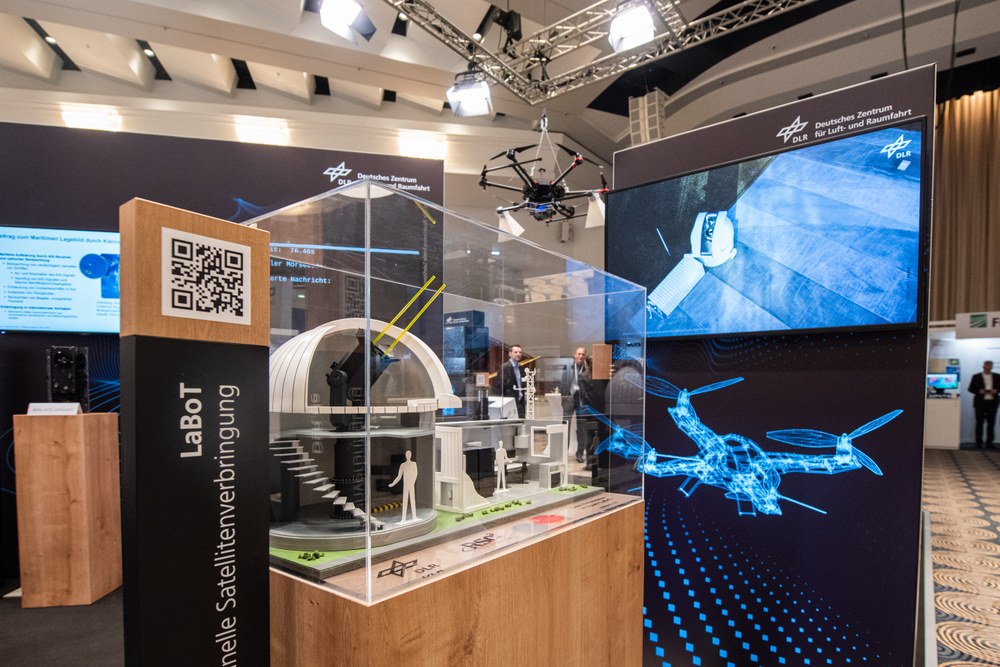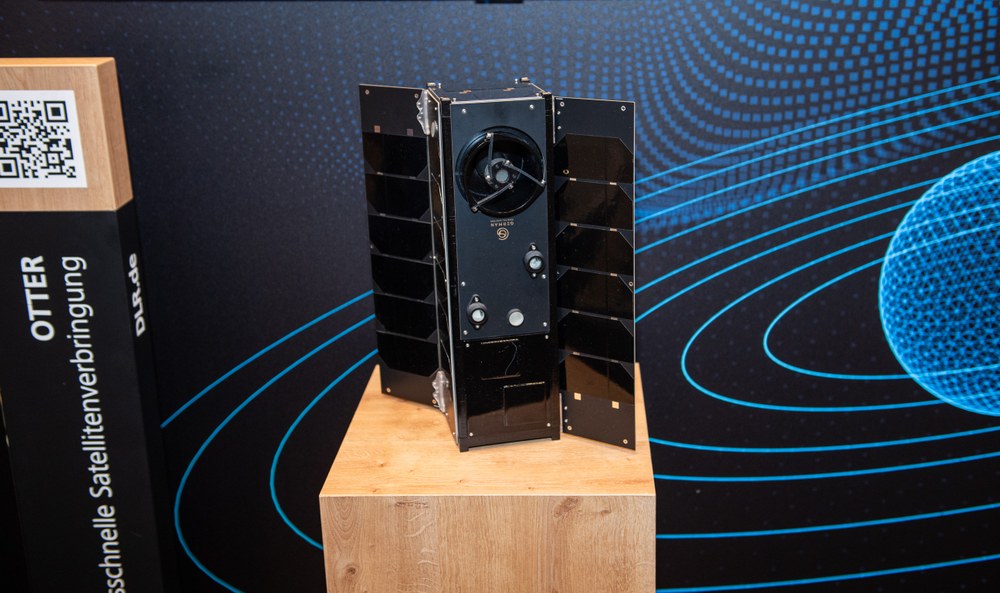RSC³ presents Responsive Space on DWT conference



Das RSC³ in focus: Responsive Space
The RSC³ participated in this year's conference of the Deutsche Gesellschaft für Wehrtechnik (DWT) in Bonn with three presentations and three exhibits at the DLR booth. The focus of the RSC³'s appearance at the DWT was on the topics of Responsive Space, the EU project REACTS, and Digital Phased-Array Antenna Systems. The competence center was represented by the facility manager Dr. Andreas Ohndorf, Head of Technology Wolfgang Jung, Chief of Staff Dr. Hans-Albert Eckel, Dr. Alexander Köhler, and Sacha Tholl from the Ground Segment department of the RSC³.
Dr. Andreas Ohndorf and Wolfgang Jung initially presented the RSC³ together, focusing on the Responsive Space complex. This involves the ability to quickly launch satellites into Earth orbit or reconfigure satellites already in space to, among other things, replace or supplement failed satellites. The expansion of this capability at the national level is intended to strengthen the resilience of critical space infrastructure, both for Europe and within the framework of NATO. Against this background, the RSC³ is developing the necessary technological basis and demonstrating innovative technologies in an operational environment
Presentations from the RSC³
Immediately following is the presentation of the REACTS project. Led by the RSC³, REACTS focuses on the development of a European network for responsive satellite transportation. In this context, responsive means the ability to transport satellites into low Earth orbits within 72 hours to cover strategic, operational, or tactical needs resulting from a lack, failure, or impairment of existing space resources. This is intended to improve resilience and responsiveness regarding space-based reconnaissance and surveillance as well as satellite communication. A total of 39 European institutions and companies from 13 EU countries and Norway are involved in REACTS.
RSC³ exhibits at the DLR booth
The RSC³ presented itself with three exhibits at the DLR booth. These include the exhibit "MoMo" for demonstrating the key technology of laser communication and the exhibit of the small satellite OTTER. Additionally, a model of the Laser Ground Station LaBoT located at the site was set up to showcase an important part of the research infrastructure of the Trauen location.
- LaBoT (Laser Ground Station): The Laser Ground Station Trauen exhibit shows a model of the real setup located in Trauen. The LaBoT consists of a mirror telescope and an optical instrument for laser communication, allowing tests for laser communication with satellites under real operating conditions
- MoMo: The exhibit "Morse Mock-Up" (MoMo) demonstrates the key technology of laser communication with small satellites. It consists of two components: the satellite model "6U CubeSat" and the ground station model "LaboT" (Laser Ground Terminal). A green laser beam transmits data in the form of Morse code
- Small Satellite OTTER: The OTTER exhibit showcases the small satellite and its components. The small satellite mission OTTER includes planning, integration, testing, launch, and operation of a small satellite in collaboration with industrial partners. It focuses on two important concepts for Responsive Space: commissioning and agility. OTTER is intended to be launched into a very low Earth orbit, demonstrate accelerated commissioning, and subsequently demonstrate orbit agility by raising its orbit to 400 kilometers



At the conference, 40 technical sessions with a total of 165 presentations were presented. Over 600 conference participants attended the program at the Maritim Hotel Bonn. Among others, the Federal Ministry of Defense, the Federal Association of German Security and Defense Industries, the Fraunhofer-Gesellschaft, and the German Aerospace Center were represented.
